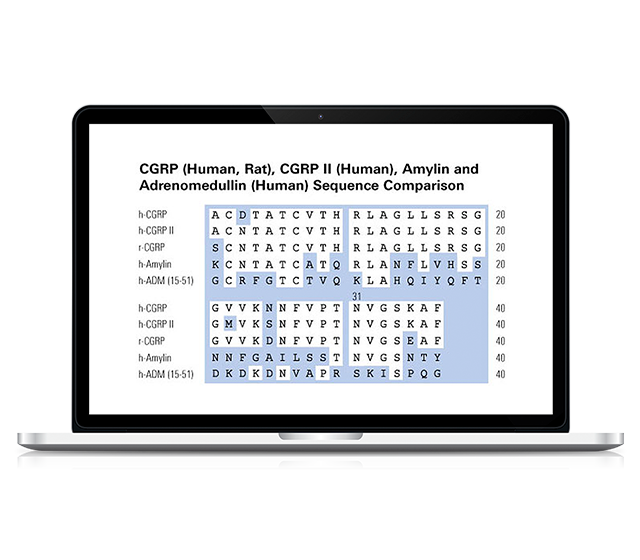We use cookies to offer you the best experience on our site. You can find out more about the cookies we use or disable them in the Cookie settings
Adrenomedullin Peptides
Role of Adrenomedullin
It plays an important role in physiological regulation of circulation, having a potent hypotensive effect when infused into circulation.
It increases cardiac contractility, dilates coronary arteries and modulates stretch-induced ANP (atrial natriuretic peptide) release.
AM is up-regulated under various pathophysiological conditions, such as myocardial ischemia, systemic inflammatory response syndrome, hemorrhagic and endotoxic hock, chronic hypotension in hemodialysis, cirrhosis and pulmonary hypertension.
References
- Prigent, M. et al. J Cell Biol 163, 1111 (2003)
- Mittra, S. et al. Am J Physiol Heart Circ Physiol 286, H1034 (2004)
- Champion, HC. et al. Am J Physiol 272, R234 (1997)
- Hay, DL. et al. Br J Pharmacol 140, 477 (2003)
- Kinnunen, P. Adrenomedullin as a Regulator of Cardiac Function. Oulu Finland (2000)
- Ziolkowska, A. et al. Int J Mol Med 11, 613 (2003)
- Nishimatsu, H. et al. Hypertens Res 26 Suppl, S79 (2003)
- Hyvelin, JM. et al. J Card Surg Jul, 17328 (2002)
- Kinnenun, P. et al. Biochem Biophys Res Commun 192, 553 (1993)
- Mahata, M. et al. Hypertension 32, 907 (1998)
More about Adrenomedullin
Adrenomedullin (AM) is a 52 amino acid vasoactive peptide discovered in 1993.
Member of the calcitonin family of peptides, it shares sequence homology with the calcitonin gene-related peptide (CGRP) and peptides from the pancreatic amylin family.
cDNA sequences of rat, pig and human reveal that preproadrenomedullin consists of 185 amino acids, with 3 sites of paired basic amino acids as targets for prohormone-processing proteolytic cleavage.
AM is produced by several tissues, including adrenal medulla, lung, kidney, retinal pigment epithelium, neurons, astrocytes, vascular endothelium, vascular smooth muscle cells and heart.
